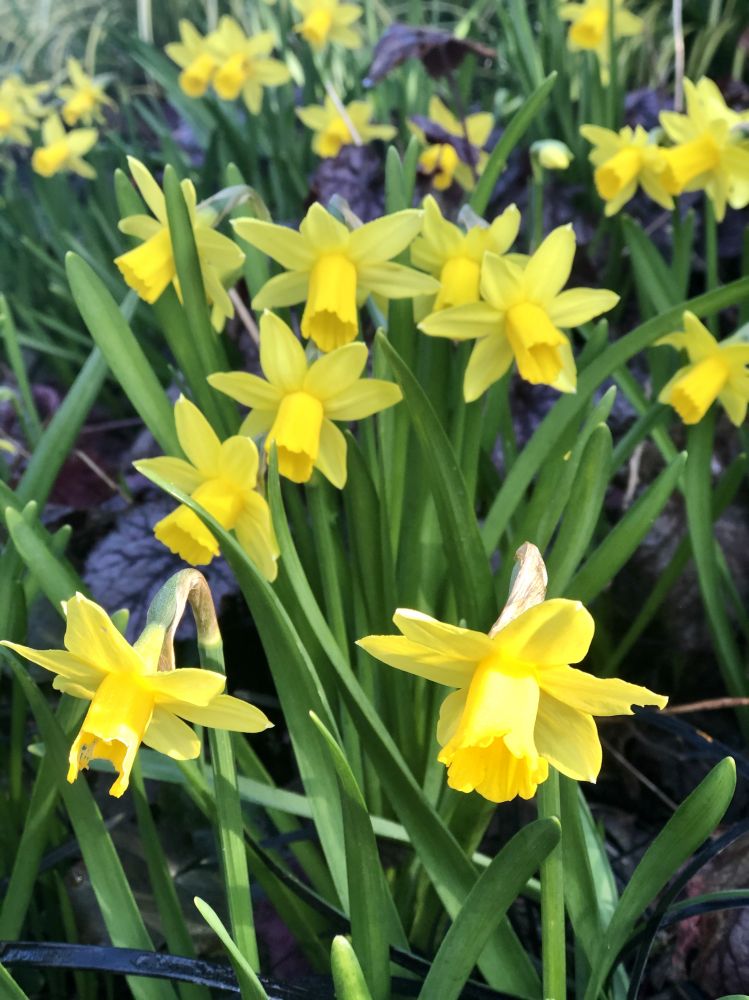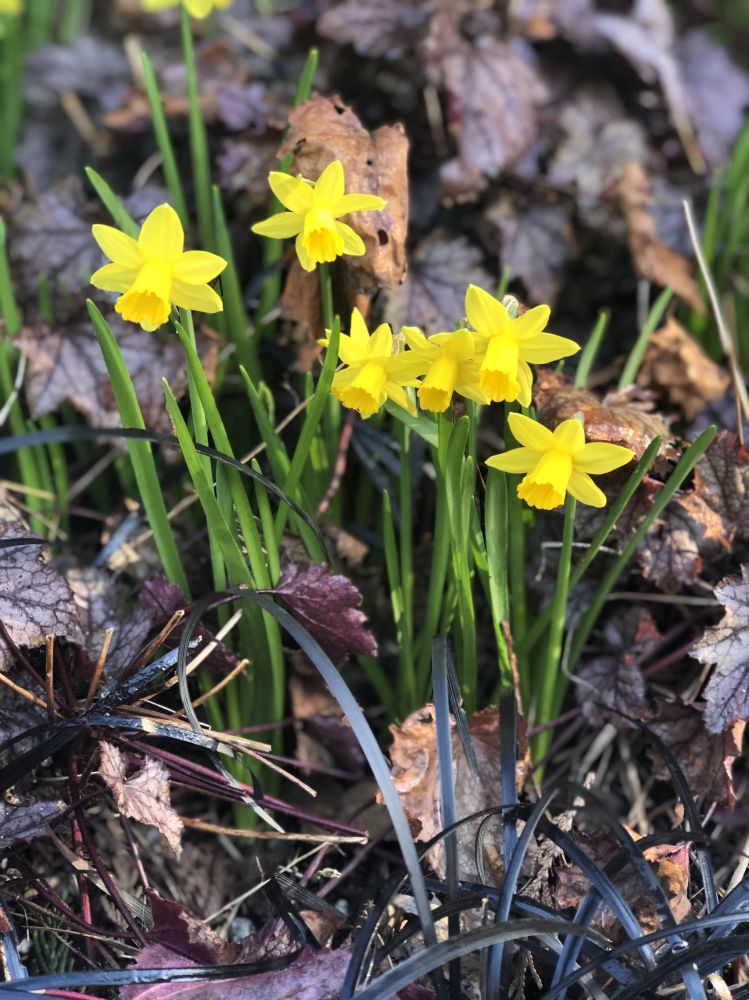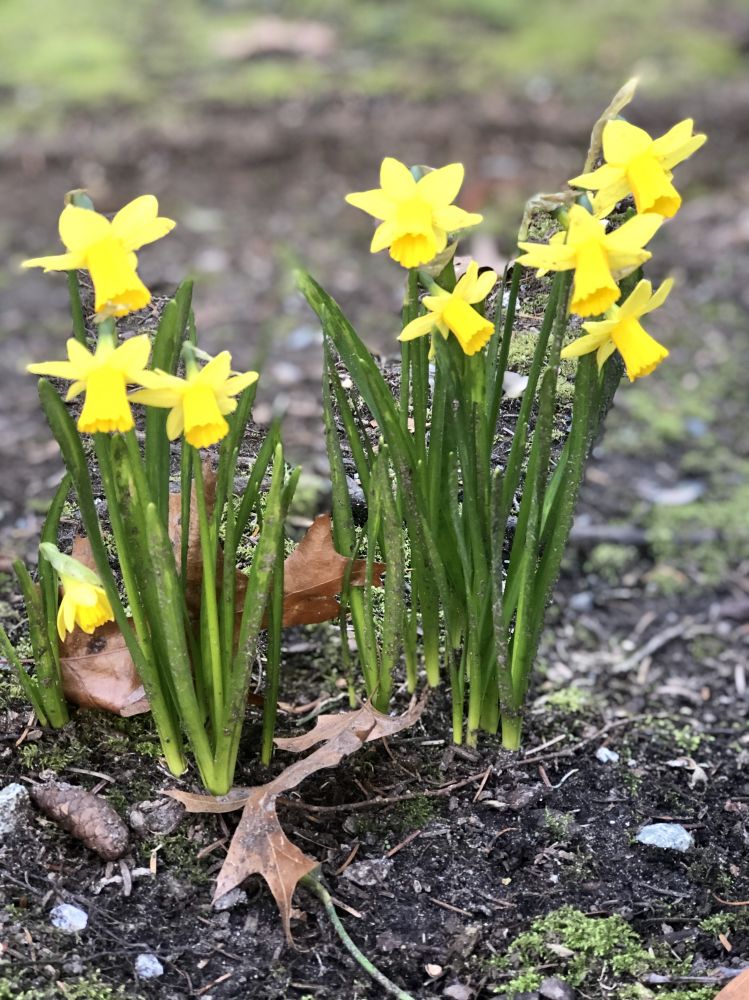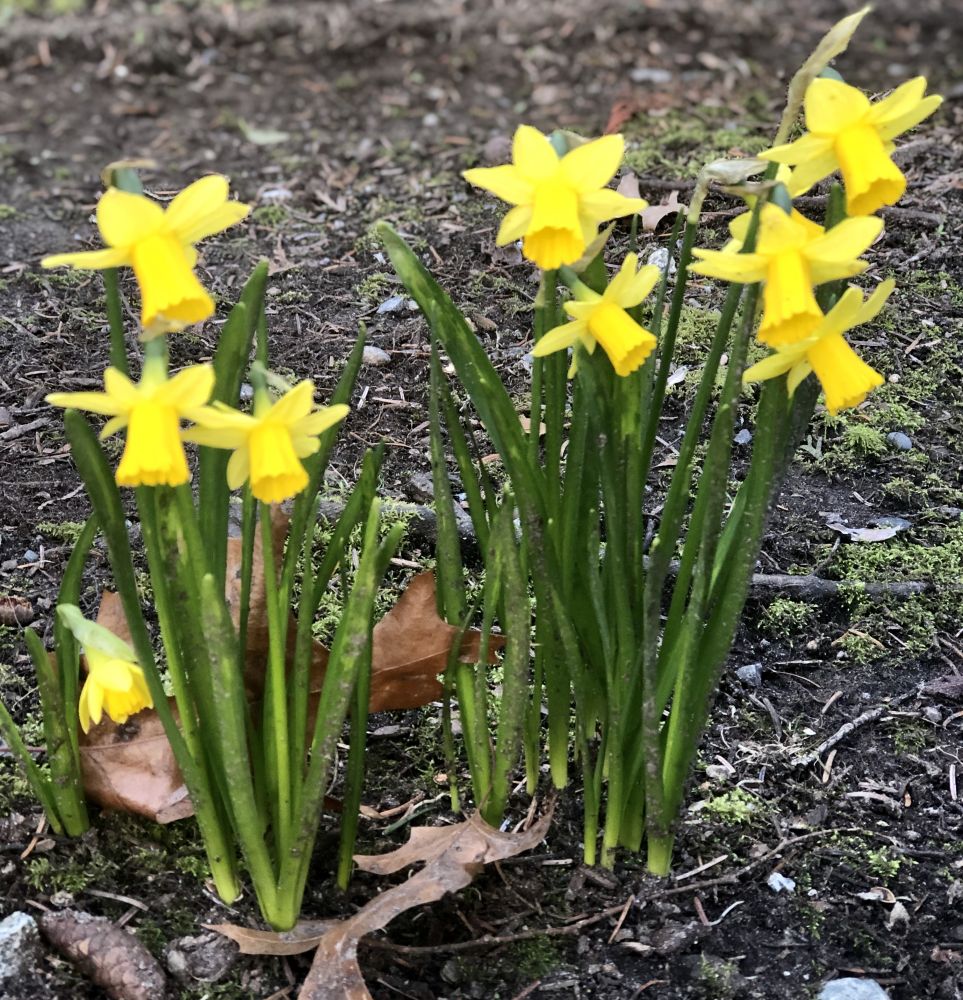盛开在油墨香里的水仙花:与水仙共舞
六)英国文学里的水仙花
文艺复兴时期的英国浪漫主义诗人将水仙平原描述成一个开着水仙花的草地,花色如金黄的蜂蜜酒(mead),一群快乐的灵魂在上面生活,这与《奥德赛》里的水仙平原出入太大了。
为什么诗歌中的水仙花是黄色的,而不是白色的呢?因为西欧的水仙花品种为Narcissus pseudonarcissus (wild daffodil),花瓣是淡黄色的,副冠呈喇叭形,边缘多齿状皱褶。花茎挺拔,顶生单花,花朵硕大。中国人翻译成洋水仙、黄水仙或喇叭水仙。
黄水仙与基督教的四旬期(lent)及复活节有关,它们的花期大约从四旬期首日(即圣灰星期三,Ash Wednesday)开始,一直到复活节后才结束,因此又被称为“四旬期百合”(lent lily)或“复活节钟”(Easter bell),象征着复活。黄水仙还是威尔士的国花。


尽管黄水仙是漂亮的观赏花,但也有人认为低垂的花朵一副丧气模样,代表着不幸,拒绝将它们放在屋内。比如罗伯特·赫里克(Robert Herrick,1591—1674)就把黄水仙与死亡联系在一起,他写有一首著名的《咏黄水仙》(To Daffodils ):
美丽的黄水仙,
我们悲哀地看着
你匆匆地离开
连早晨的太阳
都还没有达到正午高度
留下来,留下来
直到匆忙的白日
跑进
黄昏的歌谣;
我们一起祈祷着,
随你一同离开。
(Fair Daffodils, we weep to see
You haste away so soon;
As yet the early-rising sun
Has not attain'd his noon.
Stay, stay,
Until the hasting day
Has run
But to the even-song;
And, having pray'd together, we
Will go with you along. )
如你,我们只有短暂的停留
我们也只有短暂的春天
生命转瞬即逝
一切,和你一样
我们死去
枯朽,同样的
迅速,
如夏天的雨
如早晨的珠露
再也无迹可寻
(We have short time to stay, as you,
We have as short a spring;
As quick a growth to meet decay,
As you, or anything.
We die
As your hours do, and dry
Away,
Like to the summer's rain;
Or as the pearls of morning's dew,
Ne'er to be found again. )

除了玫瑰和百合,水仙是英国文学作品里出现最多的诗意花卉。斯宾塞、莎士比亚、米尔顿、华兹华斯、雪莱、济慈等作家都写过它。
莎士比亚(公元1564-1616)的《冬天的童话》(The winter’s tale)里有两处提到了水仙花:
第一处:第四幕第二场,奥托吕科斯 (Autolycus, 一个无赖的小贩、流浪者和扒手)说:
“当水仙花开始发芽,
嗨,山坡上那个年轻的婆娘,
为什么,那是一年中最美好的时光
因为热血在严冬的苍白下涌动
白色的床单挂在篱笆上
嗨,可爱的鸟儿,哦,动听歌唱
引发我的贼心痒痒
喝一夸脱啤酒就活得像国王
百灵鸟,叽叽喳喳地唱
嗨,嗨,还有画眉鸟和蓝鸦也在
为我和阿姨们齐唱夏天的歌
当我和婆娘在干草堆里翻滚”
(When daffodils begin to peer, --
With hey! The doxy over the dale, --
Why, then comes in the sweet o’ the year;
For the red blood reigns in the winter’s pale.
The white sheet bleaching on the hedge, --
With hey! the sweet birds, O, how they sing! --
Doth set my pugging tooth on edge;
For a quart of ale is a dish for a king.
The lark, that tirra-lirra chants, --
With hey! with hey! the thrush and the jay, --
Are summer songs for me and for my aunts,
While we lie tumbling in the hay.)
在这段轻快的话语里,水仙花象征着早春的来临。
第二处:第四幕第四场,女主人公珀迪塔(Perdita)有一段台词:
“哦,普洛塞庇娜,那些让您害怕的花朵,让它们从帝乌斯的战车上掉下来!水仙花开放在燕子归来之前,以它们的美丽吸引着三月的风。紫香堇微小,但甜美过朱诺的双瞳或塞斯利亚(即女神阿佛洛狄忒)的呼吸”。
(O Proserpina,
For the flowers now, that frighted thou let’st fall
From Dis’s waggon! daffodils,
That come before the swallow dares, and take
The winds of March with beauty; violets dim,
But sweeter than the lids of Juno’s eyes
Or Cytherea’s breath)
Proserpina即冥后珀耳塞福涅(Persephone),水仙花是帝乌斯的诱饵。水仙花在这里预示着死亡和不幸。
莎士比亚的最后一部,也是大多数读者最不熟悉的戏剧作品《两贵亲》(The Two Noble Kinsmen)里,有两处提到了水仙花:
第二幕第二场,艾米莉亚(Emilia)和她的女仆们在一起交谈。
“艾米莉亚:
这个花园充满了欢乐
这是什么花?
女仆说:
‘这叫水仙,小姐。
艾米利亚:
一定就是那个英俊的男孩,却傻傻地,
爱上了自己;难道那里缺女人吗?”
(Emilia
This garden has a world of pleasures in’t
What flow’r is this?
Maid Servant
‘Tis called narcissus, madam.
Emilia
That was a faire boy certaine, but a fool,
To love himself; where there not maides enough?)
第四幕第一场:深爱着监狱长的女儿的乌尔(Wooer)说:
“他的镣铐会出卖他-他将被带走,……
那我该怎么办?我会带来,
一百个像我一样懂爱的黑眼睛姑娘,
头戴水仙花冠,
有着樱桃红唇和艳如大马士革蔷薇的双颊,
我们在公爵面前跳奇怪的舞蹈
请求他原谅。然后她谈到了你,先生-
你会在明天上午掉脑袋,”
('His shackles will betray him -- he'll be taken, ...
And what shall I do then? I'll bring a bevy,
A hundred black-eyed maids that love as I do,
With chaplets on their heads of daffodillies,
With cherry lips and cheeks of damask roses,
And all we'll dance an antic fore the Duke
And beg his pardon.' Then she talked of you, sir --
That you must lose your head tomorrow morning,)
尽管莎士比亚将水仙花与希腊传说联系在一起,但台词里的水仙花全是英国原生的Wild Daffodil(黄水仙)。与他同时代的草药学家约翰.杰拉德(John Gerard)做了统计:当时的伦敦总共有24个水仙花品种,在花园里广为种植。


其实早在公元前300年,野生的水仙已被希腊人引种为园艺花卉,一直到19世纪初,英国、荷兰等国的园艺学家才对水仙品种进行了大量的人工杂交与育种工作。如今黄水仙的栽培品种达到26000个,平均每年推出160个新品种。
几百年前,欧洲人常常将花朵较小,副冠较浅的水仙花称为narcissus。花朵硕大,副冠像个小喇叭的是daffodil。随着杂交品种不断推出,现在人们习惯用narcissus来表示水仙花属,用daffodil表示水仙花。


威廉·华兹华斯(William Wordsworth,公元1770-1850年)的《咏水仙》(Daffodils)是世界文坛公认的最好的水仙赞歌。1802年,他与姐姐多萝西(Dorothy)外出旅游,在湖畔遇见了一大片盛开的水仙花,姐姐在游记中写下言辞优美的一段话:
“我从未见过水仙花如此美丽,它们生长在布满苔藓的石头中间,有些花疲惫不堪地枕在石头上,其他的花旋转、摇摆、起舞,像是随着湖面吹来的风在欢笑,她们看起来是如此快乐,每看一眼,每次都在变化。”
(I never saw daffodils so beautiful they grew among the mossy stones about and about them, some rested their heads upon these stones as on a pillow for weariness & the rest tossed & reeled & danced & seemed as if they verily laughed with the wind that blew upon them over the Lake, they looked so gay ever glancing ever changing)

受此启发,威廉·华兹华斯写下《咏水仙》:
像一朵高高飘在山谷上的云,
我独自一人到处游荡,
忽然间我看到一大片鲜花,
金色的水仙正在开放。
它们在湖边,在树下
随着微风起舞摇晃。
(I wandered lonely as a cloud
That floats on high o'er vales and hills,
When all at once I saw a crowd,
A host of golden daffodils;
Beside the lake, beneath the trees,
Fluttering and dancing in the breeze.)
它们像密集的群星,
在银河里闪烁发光;
它们沿着海湾,
绵延不尽伸向远方。
一眼望去就有一万朵,
摇头晃脑起舞婆娑。
(Continuous as the stars that shine
and twinkle on the Milky Way,
They stretched in never-ending line
along the margin of a bay:
Ten thousand saw I at a glance,
tossing their heads in sprightly dance.)
身边的粼粼波光随之而舞,
但水仙的欢欣胜过水波
诗人拥有如此开心的伙伴,
也情不自禁欢愉;
我凝望良久,却很少想到
眼前美景带给我多少财富
(The waves beside them danced; but they
Out-did the sparkling waves in glee:
A poet could not be but gay,
in such a jocund company:
I gazed—and gazed—but little thought
what wealth the show to me had brought:)
每当我躺在沙发上
空虚茫然或默默思量,
它们在我的内心闪现
这是孤独带来的祝福;
然后我的心充满了快乐,
和水仙一起跳舞。
(For oft, when on my couch I lie
In vacant or in pensive mood,
They flash upon that inward eye
Which is the bliss of solitude;
And then my heart with pleasure fills,
And dances with the daffodils. )
某些西方学者认为,这首诗歌具有划时代的意义。在华兹华斯之前,个人感受只是文学作品的一小部分。而华兹华斯将个人主观感受变成了文学主题,作家要对自己表述的感受负道德责任 -这就是所谓的小资情调吧。
如今水仙的微笑已经穿越时空,绽放在世界的每一个角落。放下你的忧愁,与水仙共舞吧!


